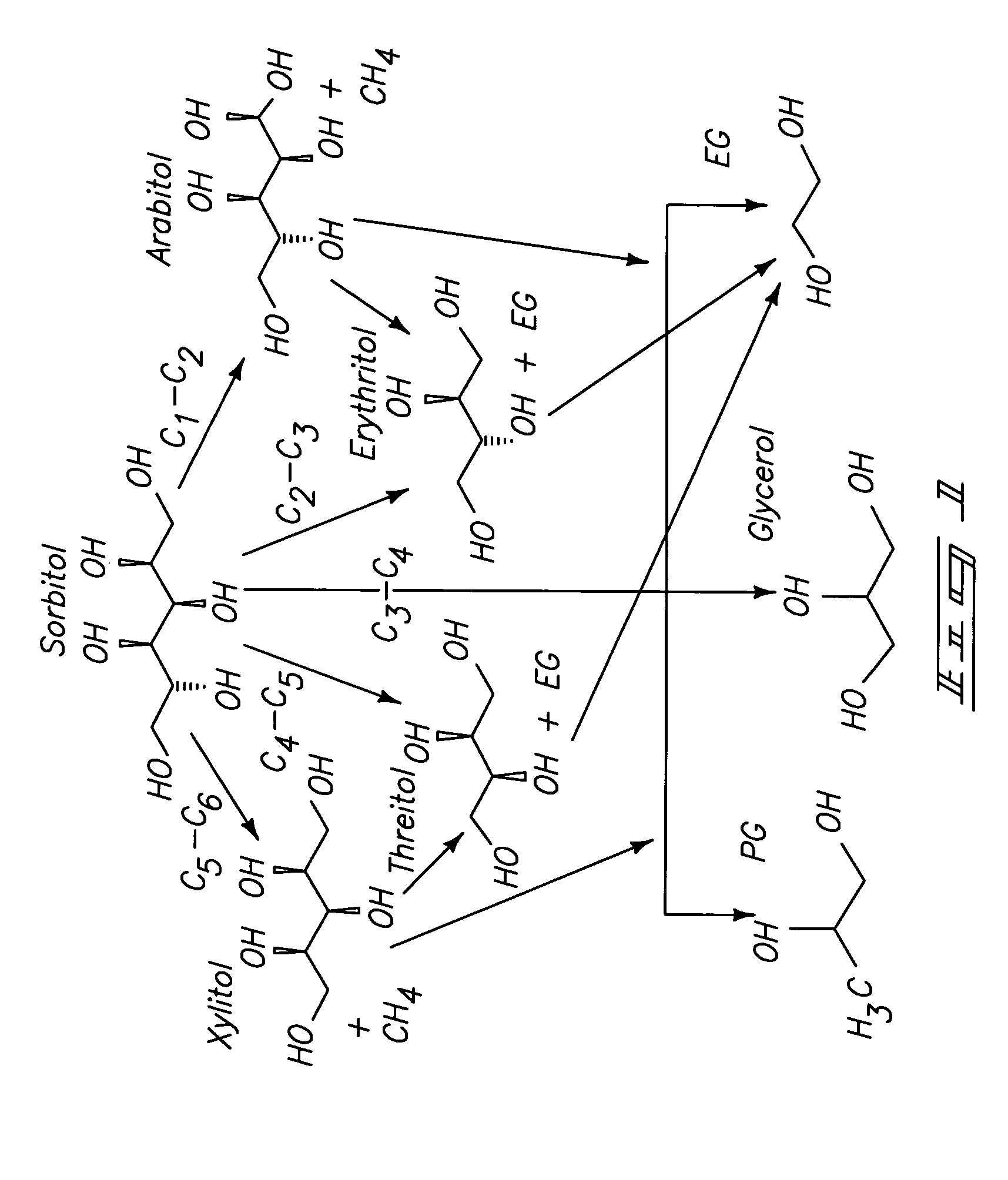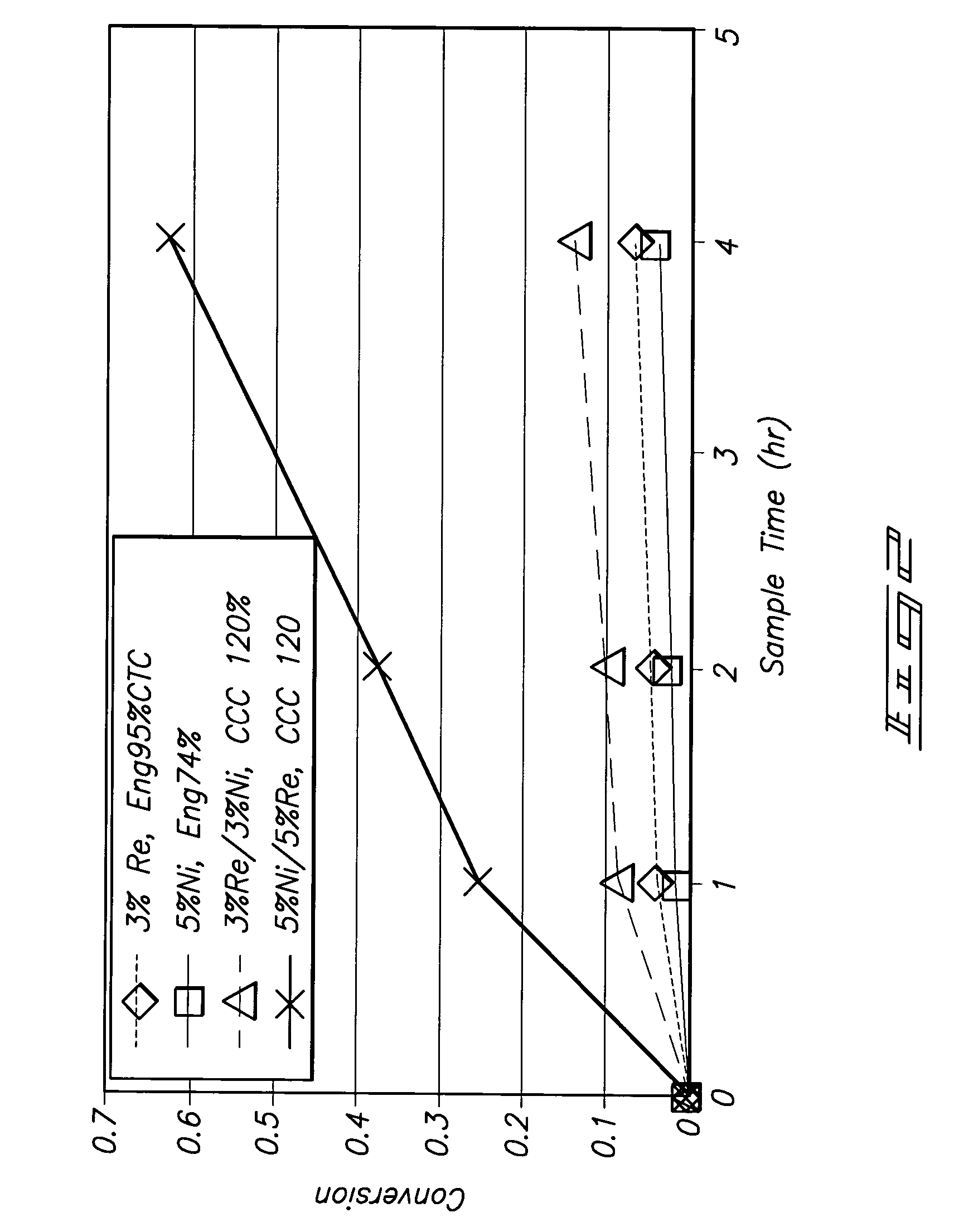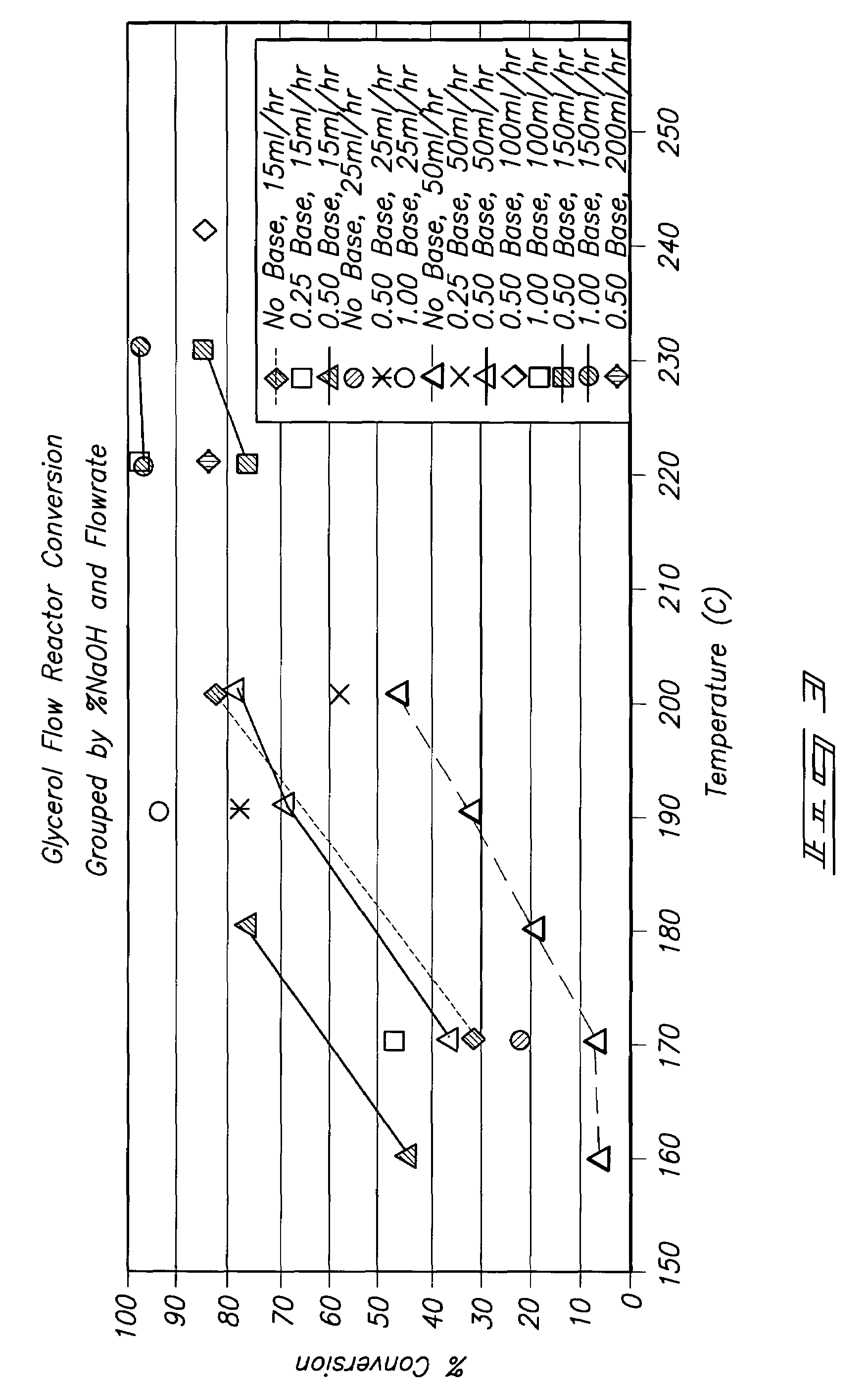[0015]In another aspect, the invention provides a method of improving the catalytic activity or selectivity of a supported
metal catalyst for the reaction of
hydrogen with a 6-carbon sugar, a 6-carbon
sugar alcohol, or
glycerol. In this method,
rhenium is incorporated in a
metal catalyst to form a
rhenium-containing multimetallic
metal catalyst. The Re-containing catalyst is reduced prior to, or simultaneous with a
hydrogenolysis reaction. Preferably, the reduction is carried out by exposing the catalyst to hydrogen gas. Preferably, the 6-carbon sugar or a 6-carbon
sugar alcohol is exposed to hydrogen and a
rhenium-containing multimetallic
metal catalyst under conditions sufficient to convert at least 40% of the sugar or
sugar alcohol to
propylene glycol,
glycerol,
ethylene glycol or any combination thereof. Here, “improving” means that at the same conditions where the rhenium-containing multimetallic catalyst results in 80% conversion, the yield of
propylene glycol (“PG”) is improved by at least 5%, as compared with running the same reaction over each of: the same catalyst without rhenium, the same catalyst without rhenium but containing added weight of metal equal to the weight of rhenium in the
improved method, and the same catalyst without rhenium but containing added moles of metal equal to the moles of rhenium in the
improved method.
[0020]In a further aspect, the invention provides a method of improving the reaction of hydrogen with a 5 carbon sugar, a 5 carbon sugar
alcohol, lactate or lactic acid. In this method, a 5 carbon sugar, a 5 carbon sugar
alcohol, lactate and lactic acid is reacted with hydrogen in the presence of a
solid, rhenium-containing multimetallic catalyst. In this method, “improving” means that at the same conditions where the rhenium-containing multimetallic catalyst results in 80% conversion, the yield of PG is improved by at least 5%, as compared with running the same reaction over any of: the same catalyst without rhenium, the same catalyst without rhenium but containing added weight of metal equal to the weight of rhenium in the
improved method, and the same catalyst without rhenium but containing added moles of metal equal to the moles of rhenium in the improved method.
[0021]In a further aspect, the invention provides method of improving the catalytic activity or selectivity of a supported
metal catalyst for the reaction of hydrogen with a 5-carbon sugar, or 5-carbon sugar alcohol, or lactic acid. The catalytic activity or selectivity of the supported
metal catalyst is improved by incorporating rhenium in said metal catalyst to form a rhenium-containing multimetallic metal catalyst. The catalyst is typically reduced prior to or simultaneous with the reaction of hydrogen with a 5-carbon sugar, or 5-carbon sugar alcohol, or lactic acid. Preferably, the method also includes the step of exposing the sugar, sugar alcohol, or lactic acid to the rhenium-containing multimetallic metal catalyst under conditions sufficient to convert at least 40% of the sugar, sugar alcohol or lactic acid to propylene,
glycerol,
ethylene glycol or any combination thereof. In this method, “improving” means that when tested with 20 weight %
xylitol in
aqueous solution with 1 weight %
sodium hydroxide, 1200 psi (8.2 MPa) hydrogen in a
batch reactor until there is 80%
xylitol conversion, the yield of PG is improved by at least 5%, as compared with running the same reaction over each of: the same catalyst without rhenium, the same catalyst without rhenium but containing added weight of metal equal to the weight of rhenium in the improved method, and the same catalyst without rhenium but containing added moles of metal equal to the moles of rhenium in the improved method.
[0024]Various embodiments of the inventive methods have been found to provide numerous unexpected results that are superior over prior technologies, including: stability of the catalytic
system, high conversions at relatively mild conditions, desired selectivities, high value product distributions such as high concentrations of propylene glycol, high PG selectivity at elevated temperature, production of 1, 3
propanediol, and
process control to produce desired products.
[0025]The product mixtures that can be derived from the inventive methods offer advantages such as economy and environmentally-friendly derivation from fermented materials. These product mixtures can be used in various applications, for example, as anti-freeze.
 Login to View More
Login to View More 


